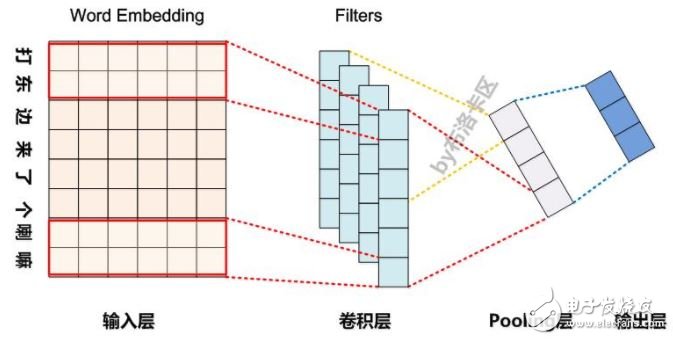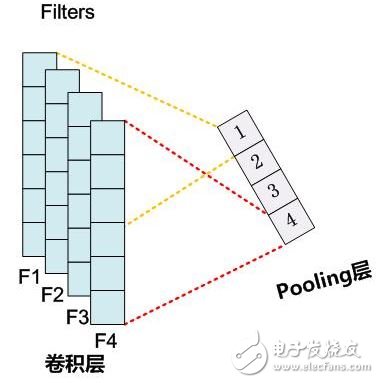Convolutional Neural Networks (CNNs) are among the most widely used deep learning models in natural language processing (NLP), alongside Recurrent Neural Networks (RNNs). Figure 1 illustrates a typical CNN architecture applied to NLP tasks. In practice, input text is usually represented using word embeddings, which convert one-dimensional textual data into a two-dimensional matrix. Assuming the input sequence contains m words, and each word embedding has a dimension of d, the overall input becomes an m×d matrix. Figure 1: Typical network structure of CNN model in natural language processing As shown, the input size for CNNs in NLP can vary depending on the length of the sentence. The convolutional layer acts as a feature extractor, where filters of size k×d slide across the input matrix. Each filter captures local features by applying nonlinear transformations. As the window moves through the input, it generates a feature vector for that filter. Multiple filters operate independently, extracting different sets of features. After the convolutional layer, a pooling layer is typically applied to reduce the spatial dimensions of these features, followed by a fully connected layer for classification. The key steps in CNNs are convolution and pooling. In this section, we focus on common pooling techniques used in NLP applications. Max Pooling Over Time Operation in CNN Max pooling over time is the most commonly used downsampling technique in CNNs for NLP. It works by selecting the maximum value from the feature map generated by a filter, discarding all other values. This approach emphasizes the strongest feature while ignoring weaker ones. However, in NLP, the position of a feature often carries important semantic meaning. For instance, the subject of a sentence may appear at the beginning, and the object at the end. Max pooling can lose this positional information, which may be crucial for certain tasks. Another advantage of max pooling is its ability to reduce model complexity and prevent overfitting. By reducing the dimensionality of the feature maps, it decreases the number of parameters required for subsequent layers, making the model more efficient. Additionally, it helps handle variable-length inputs by producing fixed-size outputs, which is essential when connecting to fully connected layers that require a predefined number of neurons. Figure 2: The number of neurons in the Pooling layer is equal to the number of Filters Despite its benefits, max pooling also has some drawbacks. First, it completely discards location information, which can be critical in NLP. Second, it only retains the maximum value, even if a feature appears multiple times, thus losing information about the frequency or strength of that feature. These limitations have led researchers to explore alternative pooling strategies. As the saying goes, “Crisis brings opportunity.†Identifying the weaknesses of a model is a valuable step toward innovation. In the next section, we will discuss two popular improvements to the pooling mechanism that aim to address these issues. K-Max Pooling Aquarium submersible pump is an appliance used for water circulation in fish tanks, rockery and other equipments. Aquarium Submersible Pumps,Submersible Pumps,Function Submersible Pump,Eco-Friendly Water Pumps Sensen Group Co., Ltd.  , https://www.sunsunglobal.com
